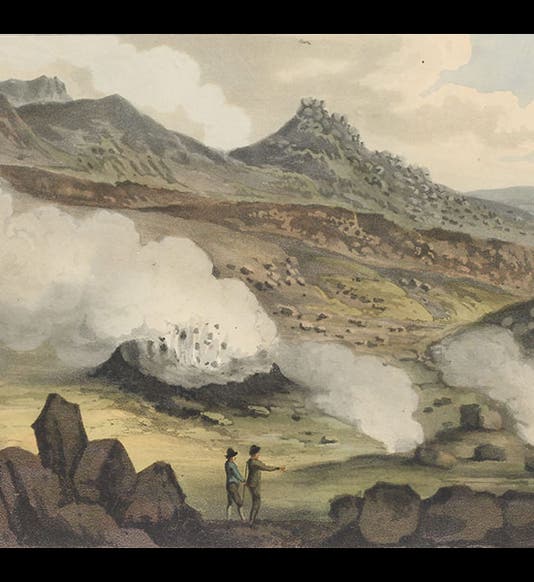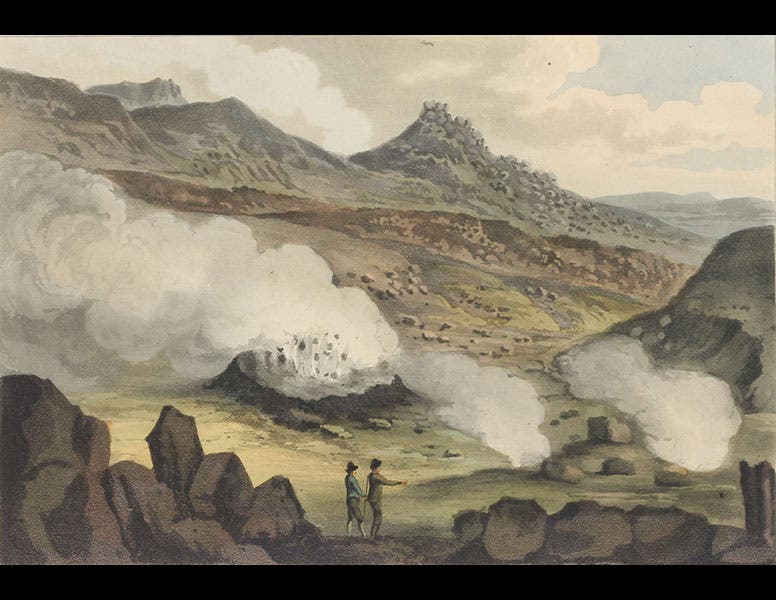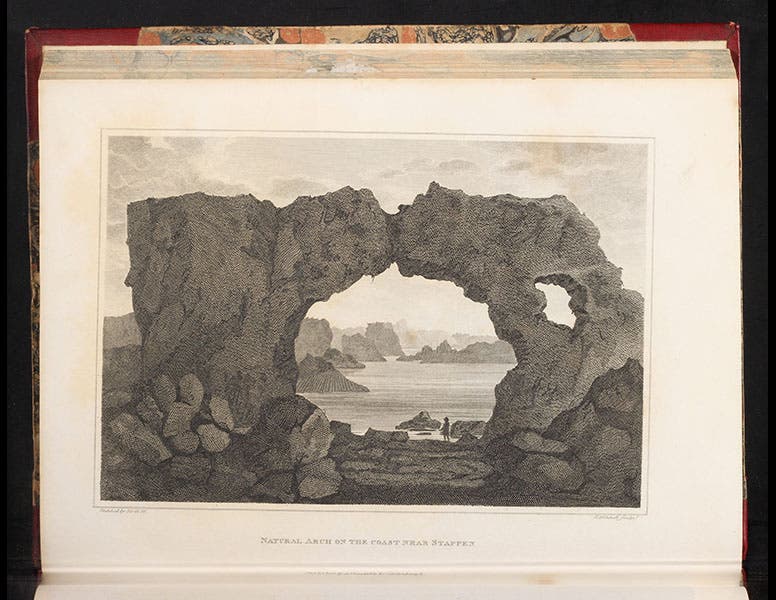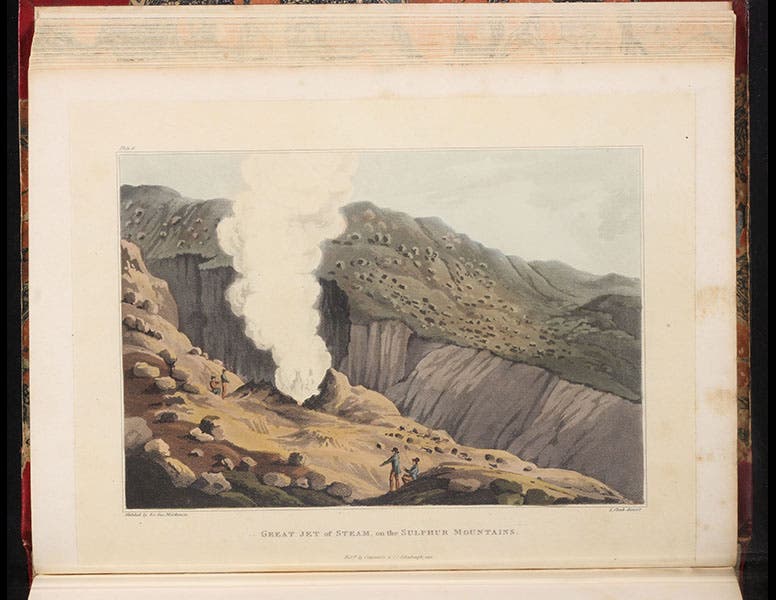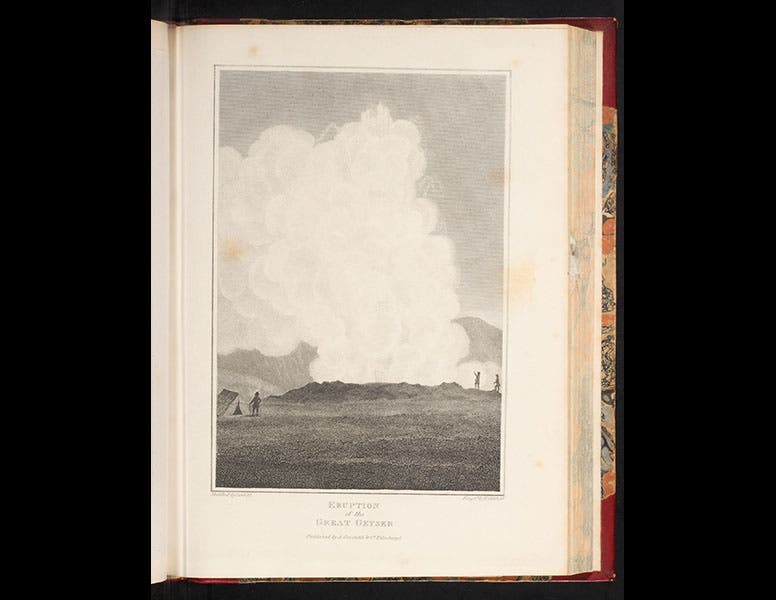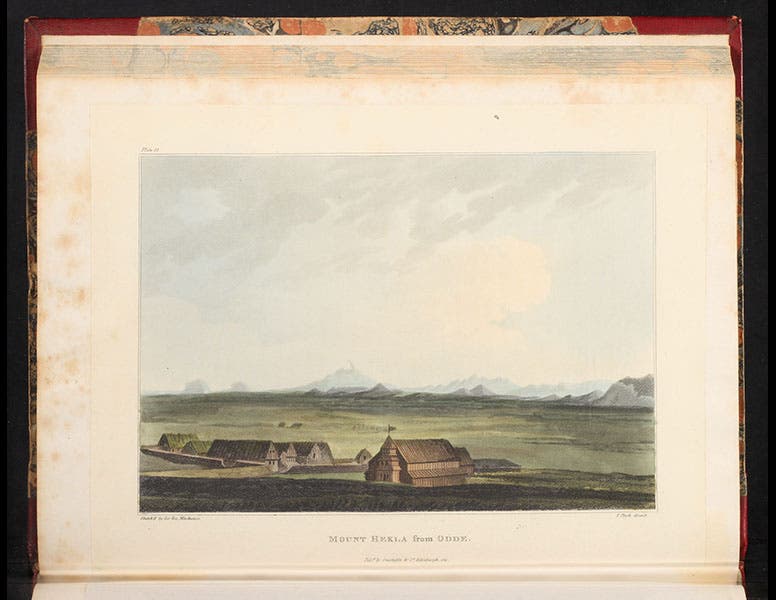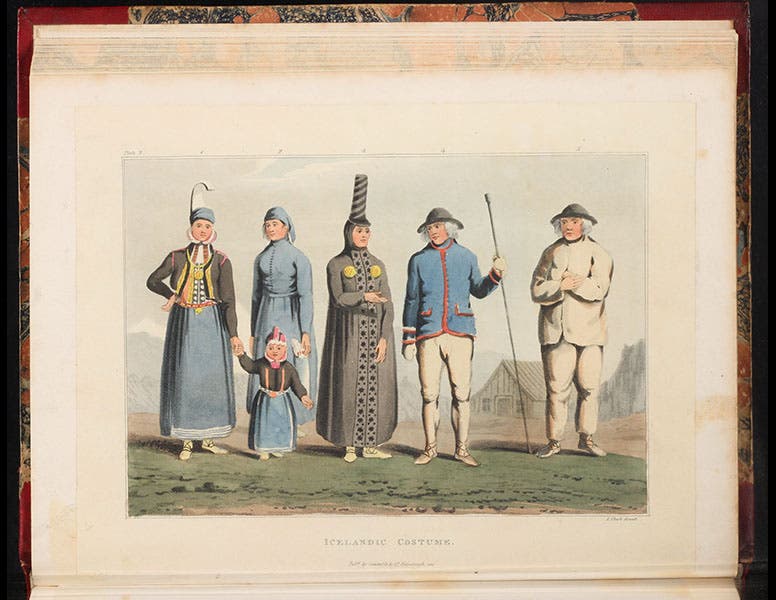Scientist of the Day - George Steuart Mackenzie
George Steuart Mackenzie, a Scottish geologist, was born June 22, 1780. MacKenzie was an ardent follower of the geological ideas of James Hutton. Hutton was a plutonist who believed that rocks such as granite and basalt are igneous in origin; plutonists were opposed by followers of Abraham Werner, calling themselves neptunists, who thought that all rocks had an aqueous origin, deposited from some sort of primordial ocean. Mackenzie made a trip to Iceland in 1810 with two younger students, for the sole purpose of demonstrating that the basalt of the island came from the numerous volcanoes that dot the land. His narrative, Travels in the Island of Iceland (1811) was as much a Huttonian polemic as it was an account of his travels. The next year, Mackenzie staged a play in Edinburgh, Helga and her Lovers, a strange mix of Icelandic saga and plutonist propaganda. He even persuaded Sir Walter Scott to write the prologue. But the neptunists of the University (and there were quite a few–Edinburgh was the home of the Wernerian Natural History Society) packed the audience at the opening performance and roundly “booed it from the boards,” as they used to say.
We have a copy of Mackenzie’s Travels in the History of Science Collection; it is a beautiful publication, with many colored plates of Icelandic peoples and landscapes. The images above show a “Cauldron of Boiling Mud from the Sulphur Mountains” (first image), a natural arch near Stappen (second image), a jet of steam in the Sulphur Mountains (third image), an eruption of the Great Geyser (fourth image), a distant view of the volcano, Mount Hekla (fifth image), and some Icelanders in their native costumes (sixth image).
It is of interest that one of Mackenzie’s younger companions on the Iceland trip and a co-author of the Travels, Henry Holland, later became physician to Queen Victoria, and, more significantly to us, Charles Darwin.
Dr. William B. Ashworth, Jr., Consultant for the History of Science, Linda Hall Library and Associate Professor, Department of History, University of Missouri-Kansas City. Comments or corrections are welcome; please direct to ashworthw@umkc.edu.

